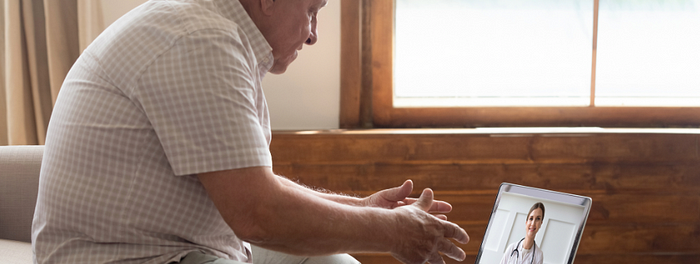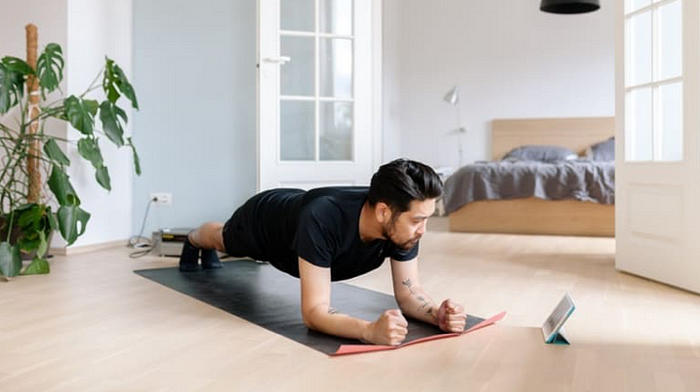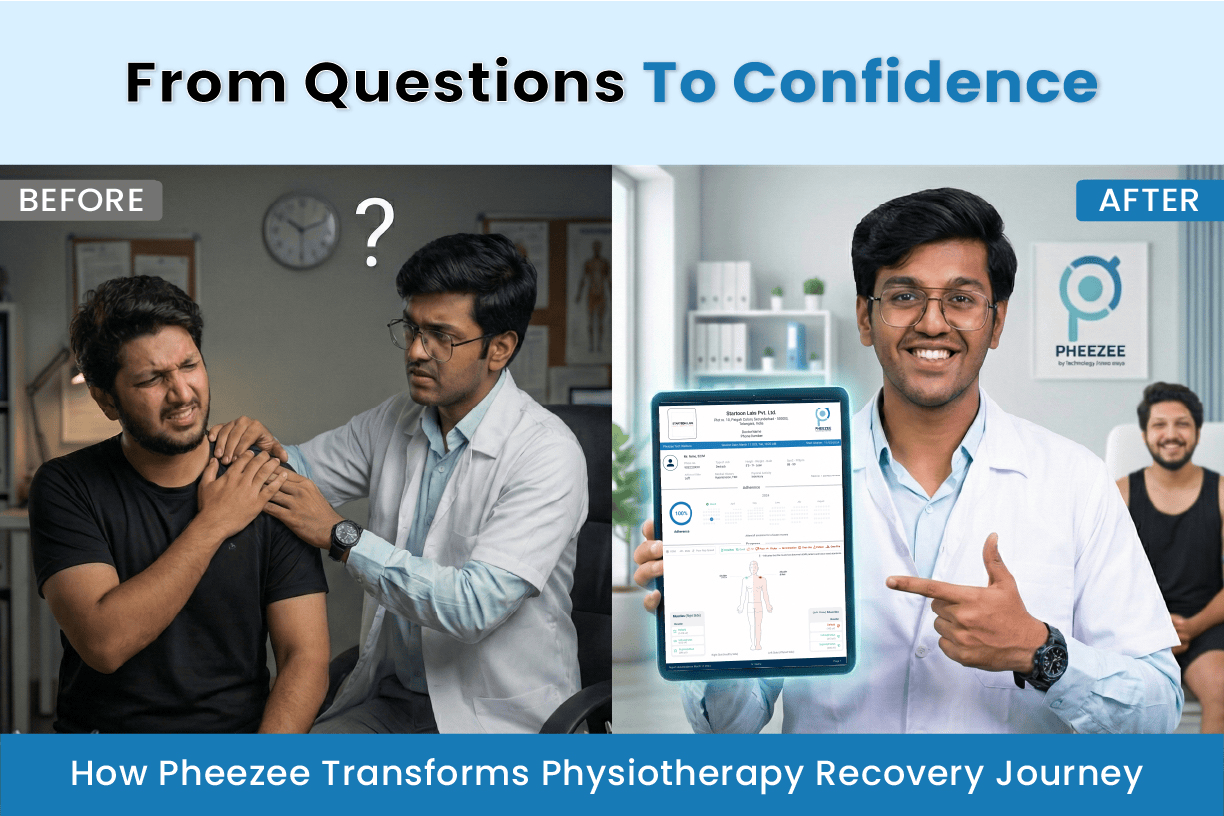Tele health in Physiotherapy: For patients and professionals

While some of us have grown up with one hand on the computer mouse and a smartphone in the other, others have more gradually learned to love the virtual world and all the convenience that it offers. Some, a bit more reluctantly bring up the rear, but for all of us, the virtual world offers both well known, and as yet undiscovered, opportunities.
One of these opportunities is called Tele health. It may also be referred to as Telemedicine or Tele rehabilitation. Whatever the term, what it entails is, simply, connecting with your healthcare provider over the internet, usually through video, instead of in a common physical space.
Telemedicine has already been in use for several years by everyone from mental health practitioners to medical doctors, but the recent virus outbreak and the subsequent social distancing efforts have catapulted it into our awareness. Thanks to Tele health, patients, ranging from children with special needs to adults of all ages with musculoskeletal complaints, pain, weakness or balance problems, have been able to continue to receive the care that they need. Tele health has enabled patients to prevent the worsening of chronic pain, and the loss of balance and function, that a long break in their care otherwise might have caused.
It is possible to access a wide range of care options through telemedicine services, including primary care consultations, psychotherapy, physical therapy, and even some emergency services.
Telemedicine is useful in situations where the patient must practice physical distancing or is unable to attend a healthcare facility in person.

Benefits
Research generally finds that telemedicine works! For example, a 2017 meta-analysis and systematic review of the use of telemedicine for treating chronic heart failure found benefits. These included lower admission rates, shorter hospital stays, and fewer deaths.
Benefits for patients
Lower costs: Some research suggests that people who use telemedicine spend less time in the hospital, providing cost savings. Also, less commuting time may mean fewer secondary expenses, such as childcare and gas.
Improved access to care: Telemedicine makes it easier for people with disabilities to access care. It can also improve access for other populations, including older adults, people who are geographically isolated, and those who are incarcerated.
Preventive care: Telemedicine may make it easier for people to access preventive care that improves their long-term health. This is especially true for people with financial or geographic barriers to quality care.
Convenience: Telemedicine allows people to access care in the comfort and privacy of their own home. This may mean that a person does not have to take time off of work or arrange childcare.
Slowing the spread of infection: Going to the doctor’s office means being around people who may be sick, often in close quarters. This can be particularly dangerous for people with underlying conditions or weak immune systems. Telemedicine eliminates the risk of picking up an infection at the doctor’s office.
Benefits for healthcare providers
Reduced overhead expenses: Providers who offer telemedicine services may incur fewer overhead costs. For example, they may pay less for front desk support or be able to invest in an office space with fewer exam rooms.
Additional revenue stream: Clinicians may find that telemedicine supplements their income because it allows them to provide care to more patients.
Less exposure to illness and infections: When providers see patients remotely, they do not have to worry about exposure to any pathogens the patient may carry.
Patient satisfaction: When a patient does not have to travel to the office or wait for care, they may be happier with their provider.
How does a Telehealth session happen?

Telehealth sessions are scheduled in exactly the same way that other sessions are, directly with the therapist, or online. With apps like PheezeeHome present at our constant aid, it has become pretty convenient to avail people of easy physiotherapy without the hustle and bustle of daily schedules.
During the appointment, you may sit in front of your computer to chat with the therapist, and angle the camera of your laptop or smartphone, or stand in front of your desktop computer, so that the therapist can see you, examine you and direct you through exercises.
PheezeeHome also offers a video archive that helps patients to watch the videos and understand the movements before practising them, including a follow-up with their respective specialists on video consultation. One can also personalise the load, reps, sets, and speed according to the requirements of different patients.
Can Telehealth appointments be used in conjunction with physical appointments?
This may actually be one of the best ways to use Telehealth services. After the initial appointment a patient may not need to be seen in a physical office for every visit, and can effortlessly connect with their therapist from home, their office or while traveling. However, from time to time the patient may have an issue that ideally would be dealt with in person, for instance when a manual treatment technique is indicated.
With that being said, performing a set of home exercises that you were once given is almost never enough in the long run to give you the benefits of physical therapy. This is a common myth.
Human function is quite complex, and simply performing three or four exercises and expecting them to carry over into your functional movements, your everyday life, is not quite realistic. Due to the complexity of our wonderful, adaptable bodies, that nevertheless remain vulnerable to the challenges of our modern lifestyles, it is simply not possible to teach a patient everything that is needed to meet the challenge of becoming and staying healthy during a few encounters. This is why Physical Therapy is traditionally delivered as a long, or shorter, series of appointments, that build on one another, as understanding increases and function improves, and is often supplemented by less frequent visits as function has been recovered, to keep you on the right track and address smaller difficulties along the way.
Home exercises tend to, without supervision and correction, morph into something less effective over time. The patient’s ability and skill grows, and exercises need to be progressed. New symptoms may appear, and need to be addressed, the patient needs to gradually learn how to apply their growing stability, strength or range of motion to their everyday activities, and, speaking of every day: every day tends to bring new challenges, new movements: a trip, lifting visiting grandchildren, a race you’re training for, a new job, a new hobby. As you work your way out of an injury and back to full function, you will need help modulating your activity level — “does this ache mean stop or that I’m getting stronger?”
Life is ever changing and fluctuating, and our response needs to mimic that.
Telemedicine is a convenient option for people who cannot go to the doctor’s office and those who prefer to stay home.
The overall emerging evidence appears to indicate that digital technologies are providing new opportunities for Physiotherapists to deliver high-quality and acceptable care to users of their service in ways that can have benefits for all.



December 24, 2021
Best article for those who are thinking of starting for the open new lab. Thanks for your information I have completed my studies as a lab technician, after completing my studies I decide to open a new pathological lab, but patients do not come because my lab is new for people, so one day I will list my lab in Findmart. Findmart is a business listing company in India after listing more patients are come and my business is growing day by day Thank You Findmart. If you want to grow your business, as a happy client I am suggesting you visit this site and grow your business. https://www.findmart.in